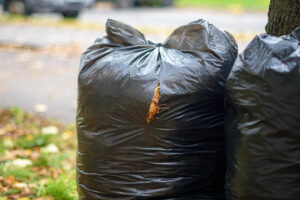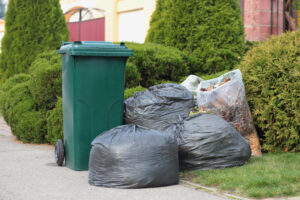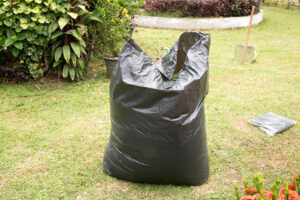Strong winds and heavy rain can leave a trail of mess in the yard, even if your garden was well-kept beforehand. Fallen branches, scattered leaves and snapped-off shrubs can clutter your space fast. While it’s tempting to put off the cleanup, the longer storm debris sits there, the harder it’ll be to deal with. Not to mention, it can attract pests and affect plant health.
Having a plan for handling storm mess pays off. That’s where garden waste bags come in handy. They help you stay on top of debris without turning it into an overwhelming task. Managing storm debris properly doesn’t just make your garden look tidy again. It keeps things safe and sets your green space up for new growth. Here’s how to work through the storm fallout step by step with a focus on using garden bags correctly and safely.
Evaluating The Damage
First up, don’t just rush outside with gloves and a rake. Take a moment to scan your garden from a safe spot. Look at what’s fallen and where. Checking things over helps avoid injury and keeps the cleanup smart instead of reactive.
Some things to look out for include:
– Downed branches that are large or tangled with power lines (leave those and call the professionals)
– Broken fences or leaning structures like trellises that could fall
– Tree limbs that are cracked but haven’t hit the ground
Once you’ve got a general idea of what’s happened, walk through the garden slowly. Separate debris into categories. Not all green waste is the same, and it helps to know what’s going into your garden waste bag.
Common storm debris that can go into a garden bag includes:
– Loose branches or twigs
– Pruned shrubs
– Grass and leaves pushed into piles
– Weeds and soft clippings
When picking up heavier branches or soaked piles of leaves, wear gloves and boots. Wet debris may hide sharp objects or insects. If it feels too heavy, don’t try to force it into a bag yourself. Break it down or set it aside for another method of disposal. Being safe and systematic keeps things smooth and saves your back.
Best Practices For Loading Garden Waste Bags
Once you’ve sorted the debris, it’s time to fill the bag. If you’re using one of the 600-litre garden bags, these hold a fair bit, but there’s still a right and wrong way to load them.
Start by placing the metal stand on firm, level ground near the bulk of your debris. Make sure there’s enough space around it for the collectors to access later. Tall grass or overgrown bushes might need trimming back first.
Use this step-by-step method to load efficiently:
1. Place bulkier items like branches or vine clippings at the bottom. Angle them side to side to cover more width and support the soft waste up top.
2. Add lighter items like leaves, weeds and grass next. Spread them out evenly so they don’t bunch in one corner.
3. Add any last bits like soft prunings or spent plants on top, but make sure they sit below the top rim of the stand.
A few quick tips to remember:
– Never overfill the bag. The waste needs to be level with the top of the metal frame
– Don’t pack in dirt, flax or general household waste. It’s for garden waste only
– Use the plastic string lock provided – don’t knot or tie the bag shut
Proper loading makes sure the collection happens without a hitch and you won’t need to redo the work later. Set the bag out the night before collection day to avoid the early morning rush.
Special Considerations For Storm Debris
Storm clean-ups aren’t like your usual weekend pruning job. Debris from strong weather can be quite different from regular garden offcuts, especially when it comes to size, weight and water content. Thick branches, soggy piles of leaves or plants blown out of beds all add to the challenge.
Large branches can be awkward to fit into a garden bag unless you cut them down first. Use secateurs or a handsaw to shorten them to a size that lines up with the shape of the bag. This makes the loading process faster and stops sharp ends from poking through the sides. If a branch just won’t break down easily, you might be better off leaving it to one side and arranging a separate disposal.
Soaked garden waste can be just as tricky. After a storm, leaves and grass clippings often clump together and hold moisture, making everything heavier. That added weight can strain the bag and frame. Before loading this kind of debris, give it a shake to get rid of excess water if possible. Spreading it out to dry under some weak spring sunlight also helps, even if it’s just for an hour or two.
Here’s what to keep in mind when loading storm-related green waste:
– Check for tangled vines and fragile root balls that came up with force. These can be messy and harder to compress
– Wet waste can get extra heavy very quickly, so layer it carefully rather than packing it all into one side
– Never press or stomp it down. You’ll damage the structure of the bag or overfill it beyond the safe limit
During spring in Auckland, storms may bring more plant material down than expected. It’s easy to get caught up and just keep filling. But overloading a garden bag hinders access for the collection and risks making the whole job more difficult. Keep everything balanced and level across the top of the frame, and if you’ve got extras, save them for the next pick-up.
Ensuring Efficient Collection Of Storm Waste
After handling the storm debris, the final step is setting up the garden bag for easy pickup. Getting the collection side right helps keep the system smooth and avoids delays that leave your garden waste sitting around for too long.
Make sure your bag is visible and easy to reach from the street. If it’s tucked behind a parked car or surrounded by junk, it’s hard for the collection team to spot and access it safely. If there’s strong wind forecast around pickup day, position the bag in a way that limits the chance of it tipping over.
Other simple tips to line things up for successful collection:
– Confirm the stand is stable and level — don’t prop it on uneven surfaces
– Keep excess debris off the ground next to the bag, or it might be missed
– Place the bag out the night before to meet the 7am collection time
– Avoid blocking access paths with fences, vehicles or wheelie bins
Spring collections in Auckland can be busier than usual, with garden growth increasing and storms shaking things up. That means having your debris bag set up properly becomes even more important during this season.
One Auckland resident shared how a springtime gale dumped not just leaves, but broken bay tree limbs across his whole front yard. By cutting them down early and getting two garden bags onto his driveway with clear space around them, the waste was collected without any hassle and the garden was back to normal quicker than expected.
Getting the setup right once saves you from redoing work or dealing with leftover mess. Think of it as the finishing touch to your storm clean-up.
Stay Ready the Next Time the Weather Turns
Spring weather can change fast, especially in Auckland. One sunny day can quickly turn into overnight winds and rain. Staying prepared in between weather shifts helps cut down the effort it takes to tidy things later.
Keeping hedges and trees well-trimmed year-round reduces the number of branches that might snap off during a storm. Do a walk-through of the garden every few weeks and clear off old or droopy growth. The better shape your garden’s in before a storm, the easier it is to tidy once it’s passed.
Another key habit is making use of regular garden bag pickups. Sticking to a cycle of maintenance helps avoid a big backlog of waste. Instead of letting heaps of trimmings pile up after a storm, your green waste can flow out more steadily.
Here’s how to stay ready for the next storm, without added stress:
– Schedule general clean-ups in early spring, focusing on weak branches
– Store tools like secateurs or lightweight saws in an easy-to-reach spot
– Place your garden bag stand where it can be used comfortably all year
– Keep paths and corners of your garden cleared so you can move freely during clean-up
Storms don’t always give much notice. But when your garden is tidy, your tools are ready and your green waste management is already ticking along smoothly, even the worst weather doesn’t leave you buried in leaves for long. Those small habits turn clean-up from a dreaded chore into something you can work through comfortably and with confidence. After all, gardening doesn’t stop for the weather in Auckland. It just shifts gear.
Spring storms can be unpredictable, but staying on top of garden maintenance makes clean-up less of a hassle. A tidy garden set up with a solid waste solution is easier to manage before and after the weather hits. If you’re looking for a dependable way to handle garden waste bags in Auckland, Green Collect makes it easy to keep your space in order all year long.







